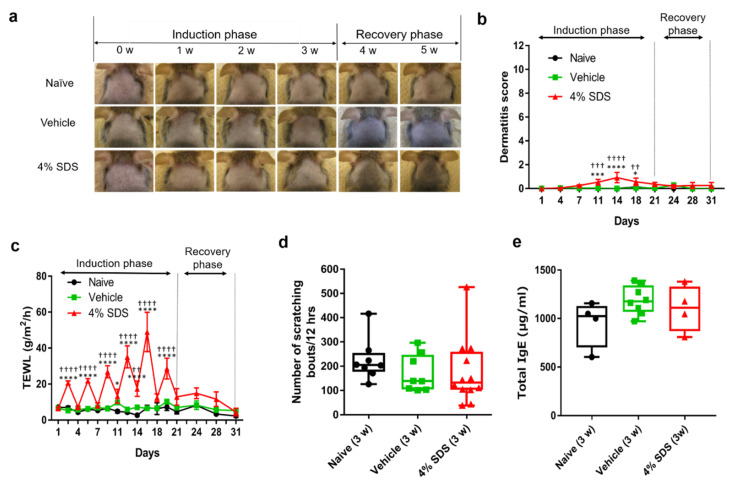Figure 1.
Characterization of skin barrier disruption model mice by repeated application of 4% SDS. (a) Representative photos of the back skins of naïve (upper panels), vehicle-treated (middle panels), and 4% SDS-treated (lower panels) mice. (b) Dermatitis scores in naïve, vehicle-treated, and 4% SDS-treated mice (n ≥ 7). (c) Effects of treatment on TEWL. * p < 0.05, *** p < 0.001, and **** p < 0.0001 compared with naïve or vehicle-treated mice by two-way ANOVA with Tukey’s multiple-comparison test. * p < 0.05, *** p < 0.001, and **** p < 0.0001 compared with naive, †† p < 0.01, ††† p < 0.001, and †††† p < 0.0001 compared with vehicle-treated mice. (d) Number of scratching bouts after each treatment; n = 8–12. (e) Serum IgE concentrations; n = 8–11. Differences between naïve, vehicle-treated, and 4% SDS-treated mice were analyzed using the Kruskal–Wallis with Dunn’s multiple-comparison test. Numbers represent the mean ± SEM of three independent experiments.

